Perspectives on SARS-CoV-2 Main Protease Inhibitors
- PMID: 34798775
- PMCID: PMC9357291
- DOI: 10.1021/acs.jmedchem.1c00409
Perspectives on SARS-CoV-2 Main Protease Inhibitors
Abstract
The main protease (Mpro) plays a crucial role in severe acute respiratory syndrome coronavirus 2 (SARS-CoV-2) replication and is highly conserved, rendering it one of the most attractive therapeutic targets for SARS-CoV-2 inhibition. Currently, although two drug candidates targeting SARS-CoV-2 Mpro designed by Pfizer are under clinical trials, no SARS-CoV-2 medication is approved due to the long period of drug development. Here, we collect a comprehensive list of 817 available SARS-CoV-2 and SARS-CoV Mpro inhibitors from the literature or databases and analyze their molecular mechanisms of action. The structure-activity relationships (SARs) among each series of inhibitors are discussed. Additionally, we broadly examine available antiviral activity, ADMET (absorption, distribution, metabolism, excretion, and toxicity), and animal tests of these inhibitors. We comment on their druggability or drawbacks that prevent them from becoming drugs. This Perspective sheds light on the future development of Mpro inhibitors for SARS-CoV-2 and future coronavirus diseases.
Conflict of interest statement
The authors declare no competing financial interest.
Figures
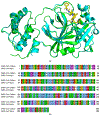


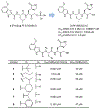

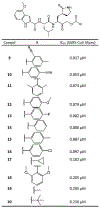

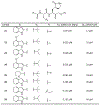


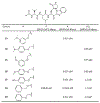
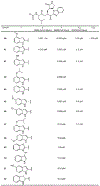

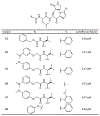
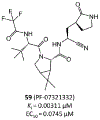
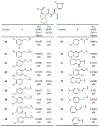
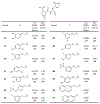

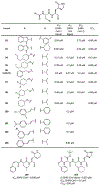
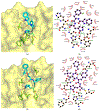


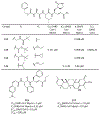
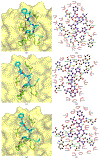

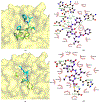
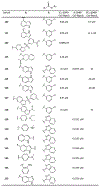
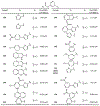


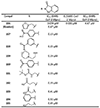





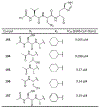
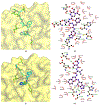



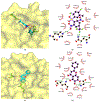

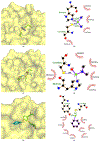
Similar articles
-
Recent Advances in SARS-CoV-2 Main Protease Inhibitors: From Nirmatrelvir to Future Perspectives.Biomolecules. 2023 Sep 2;13(9):1339. doi: 10.3390/biom13091339. Biomolecules. 2023. PMID: 37759739 Free PMC article. Review.
-
SARS-CoV-2 Mpro: A Potential Target for Peptidomimetics and Small-Molecule Inhibitors.Biomolecules. 2021 Apr 19;11(4):607. doi: 10.3390/biom11040607. Biomolecules. 2021. PMID: 33921886 Free PMC article. Review.
-
An Updated Review on SARS-CoV-2 Main Proteinase (MPro): Protein Structure and Small-Molecule Inhibitors.Curr Top Med Chem. 2021;21(6):442-460. doi: 10.2174/1568026620666201207095117. Curr Top Med Chem. 2021. PMID: 33292134 Review.
-
Computational Selectivity Assessment of Protease Inhibitors against SARS-CoV-2.Int J Mol Sci. 2021 Feb 19;22(4):2065. doi: 10.3390/ijms22042065. Int J Mol Sci. 2021. PMID: 33669738 Free PMC article.
-
Non-peptidic inhibitors targeting SARS-CoV-2 main protease: A review.Bioorg Chem. 2024 Jun;147:107380. doi: 10.1016/j.bioorg.2024.107380. Epub 2024 Apr 16. Bioorg Chem. 2024. PMID: 38636432 Review.
Cited by
-
Identification and characterization of alternative sites and molecular probes for SARS-CoV-2 target proteins.Front Chem. 2022 Oct 31;10:1017394. doi: 10.3389/fchem.2022.1017394. eCollection 2022. Front Chem. 2022. PMID: 36385993 Free PMC article.
-
Development of an active-site titrant for SARS-CoV-2 main protease as an indispensable tool for evaluating enzyme kinetics.Acta Pharm Sin B. 2024 May;14(5):2349-2357. doi: 10.1016/j.apsb.2024.03.001. Epub 2024 Mar 6. Acta Pharm Sin B. 2024. PMID: 38799620 Free PMC article.
-
Methodology-Centered Review of Molecular Modeling, Simulation, and Prediction of SARS-CoV-2.Chem Rev. 2022 Jul 13;122(13):11287-11368. doi: 10.1021/acs.chemrev.1c00965. Epub 2022 May 20. Chem Rev. 2022. PMID: 35594413 Free PMC article. Review.
-
A Versatile Class of 1,4,4-Trisubstituted Piperidines Block Coronavirus Replication In Vitro.Pharmaceuticals (Basel). 2022 Aug 18;15(8):1021. doi: 10.3390/ph15081021. Pharmaceuticals (Basel). 2022. PMID: 36015168 Free PMC article.
-
Identification of Natural Products Inhibiting SARS-CoV-2 by Targeting Viral Proteases: A Combined in Silico and in Vitro Approach.J Nat Prod. 2023 Feb 24;86(2):264-275. doi: 10.1021/acs.jnatprod.2c00843. Epub 2023 Jan 18. J Nat Prod. 2023. PMID: 36651644 Free PMC article.
References
-
- Shin MD; Shukla S; Chung YH; Beiss V; Chan SK; Ortega-Rivera OA; Wirth DM; Chen A; Sack M; Pokorski JK; Steinmetz NF COVID-19 vaccine development and a potential nanomaterial path forward. Nat. Nanotechnol 2020, 15, 646–655. - PubMed
-
- Zimmer C; Corum J; Wee S-L Coronavirus Vaccine Tracker. https://www.nytimes.com/interactive/2020/science/coronavirus-vaccine-tra..., 2020.
-
- Halford B Pfizer unveils its oral SARS-CoV-2 inhibitor. https://cen.acs.org/acs-news/acs-meeting-news/Pfizer-unveils-oral-SARS-C..., 2020.
Publication types
MeSH terms
Substances
Grants and funding
LinkOut - more resources
Full Text Sources
Other Literature Sources
Chemical Information
Miscellaneous

